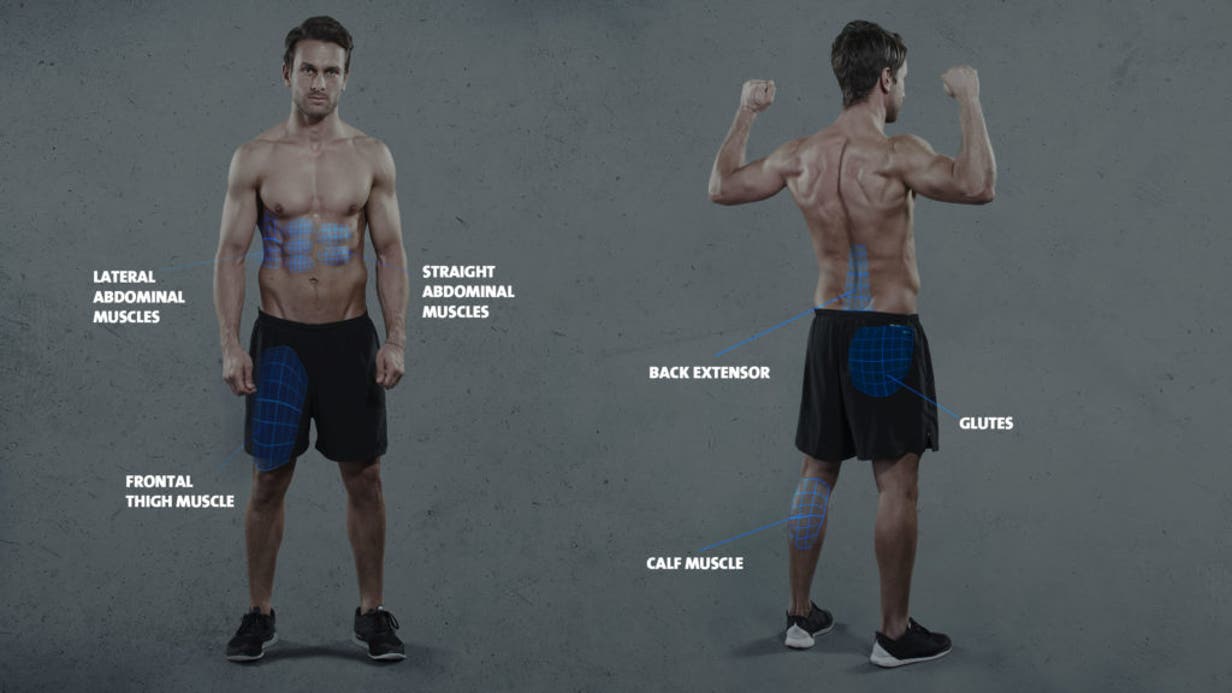What are Squats?
To squat is effectively to lower yourself down into a “seated” position with your quads parallel to the floor.
Begin upright with the knees gently flexed. Drive the hips backwards, flex the knees and lower yourself until your hips are at knee level or slightly lower. Your weight should be distributed evenly across your feet; resist the temptation to let your heels leave the ground. Ensure that your knees remain in line with your toes and that they’re not turning inwards or outwards; this puts unnecessary pressure on the joints.
You don’t need to focus on maintaining an entirely upright spine, but try to avoid bending over too much. When it comes to posture, keeping your arms out in front of you will help you to maintain a balanced position and engaging your core will prevent arching or rounding of the back.
What muscles are being used during Squats?
Squats are well known as an effective exercise to firm the gluteal muscles. And with good reason! Few exercises challenge your glutes to such an extent. This is because the main force is generated from the muscles in the glutes. Specifically, you are using the quadriceps located on the front of the thigh, the hamstrings and the associated hip muscles, all three gluteal muscles and the two calf muscles. But did you know that Squats are also beneficial to your core muscles, including both your abdominals and lower back? Extensor muscles as well as lateral and straight abdominal muscles stabilize the movement and are challenged with each Squat. This is especially important when you consider that coordination, stability and power transfer to the entire musculature from the middle of the body.

Squats - burning fat and building muscle
Many people underestimate the benefits of leg exercises because muscular development of the lower half is often not considered a performance or aesthetic priority. But they're missing out. Whether you want to build muscle or burn fat, Squats are essential! Our glute and thigh muscles make up a very large part of our total volume of muscles. For the utilization of fat, this means that exercising this part of the body uses considerable energy. For muscle building, strengthening this group of muscles implies an increased secretion of growth hormones, which in turn is conducive to overall muscle building.
Are Squats harmful to your knees?
There is a widespread rumor that Squats are bad for your knee joints. The argument is often made that the knee is not suited for the typical movement of the joint. At Freeletics, we take a very clear stand on this: in our daily lives we constantly and frequently strain the knee joint, be it only lightly or tentatively, laterally offset, with straight or bent torso. Squatting without weight is part of the basic movements of human motor activity. Joints need to be exercised to become stronger and thus being protected from injury. Only in this way will they produce more joint fluid and optimize their circulation. And let’s not forget that the most important factor for the stability of a joint is the surrounding musculature. Pay attention to the amount of squatting or knee strain you apply on a daily basis just in your basic movement and resting.
Squats - technique is decisive!
As with any other exercise, the technique is crucial! Although compared to other Freeletics exercises like Climbers or Kipping Handstand Pushups, squatting exercises are less complex, hardly any other exercise is done wrong so often, and this may indeed lead to serious injury of the knee joints. Those who have knee problems – be it before, during your workout, or since you have started with Freeletics – should examine their technique and talk to a doctor.
Let's recap:
There's no denying it: Squats are a pretty badass exercise. Done correctly, they can considerably improve lower body and core strength, muscular endurance and even balance. But, as with any exercise, it's worth taking time to hone your technique so as to avoid injury.